Description
L.O.A.—27’ 10¾”
Beam—7’ 6”
Draft—10”
Sail Area—267 sq ft
Weight—approx. 2,500#
Munroe’s Egret is truly in a class by herself. She is widely acknowledged to be the most seaworthy of all sharpies, and I personally believe she is. I won’t go on too much about her here, but rather refer the reader to Chapters One and Seven of The Sharpie Book, where I have given several of the Commodore’s wonderful stories about her. Munroe described Egret as a ‘sharpie lifeboat,’ referring to her double-ended shape and seaworthy design features. Egret’s midship section represents a healthy cross between dory and sharpie: her narrow bottom is a little deeper, and her topsides are more flaring and higher than the average sharpie. The design is an excellent compromise between the two types, combining properties of both. Cruising yachts designed along the lines of the Egret could be built in larger sizes; such vessels might be the simplest and least-expensive-possible seaworthy yachts. (See our 33, 36 & 39.5 versions in The Sharpie Catalogue.)
No original lines exist for Egret, the originals having been lost in the hurricane of 1926. Joel White, with help from D.W. Dillon, Jon Wilson and Maynard Bray, designed an Egret for WoodenBoat Magazine, working from old photographs, descriptions, and a rumored half model. From these excellent drawings, numerous reproductions have been made, including my boatbuilding partner Bill Smith’s slightly-modified Lahoma in Fort Pierce, Florida.
These craft perform very well, and seem to exhibit all the qualities of the original Egret, so we may assume that the WoodenBoat lines are at the very least an excellent interpretation of the original. I humbly present here my own version of Egret, having fretted considerably over whether or not to request permission to use WoodenBoat’s design. Finally, I decided to draw my own version largely to present the lines and construction (for plywood) in the same format used for the other designs. There are also minor differences between my interpretation of the old photographs and those of WoodenBoat’s highly-qualified personnel. Munroe used three different rigs for Egret, and I chose to use the fully-battened-sail version. I worked from six old photographs, and, judging from rig and deck details, I assume WoodenBoat’s designers had access to the same, including the photo in Chapter One of The Sharpie Book (Fig. 1- 17) which I suspect had not been previously published. After sailing Bill Smith’s Lahoma, I trusted my instinct to ever so slightly flatten Egret’s run and lift the base of her stem. I drew the stem and stern posts nearly straight at the rabbet (joint between apron and outer stem) to simplify construction, and because I suspect the originals may have been so made. I also used the rudder shape I prefer for sharpies.
I present this version strictly as my own interpretation of Egret, for simplified plywood construction.
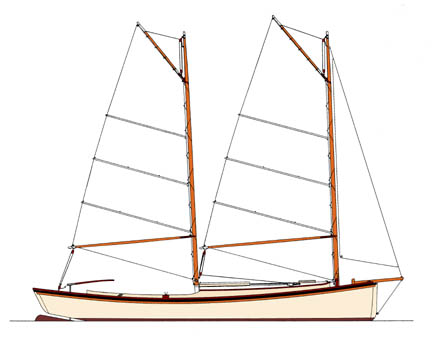
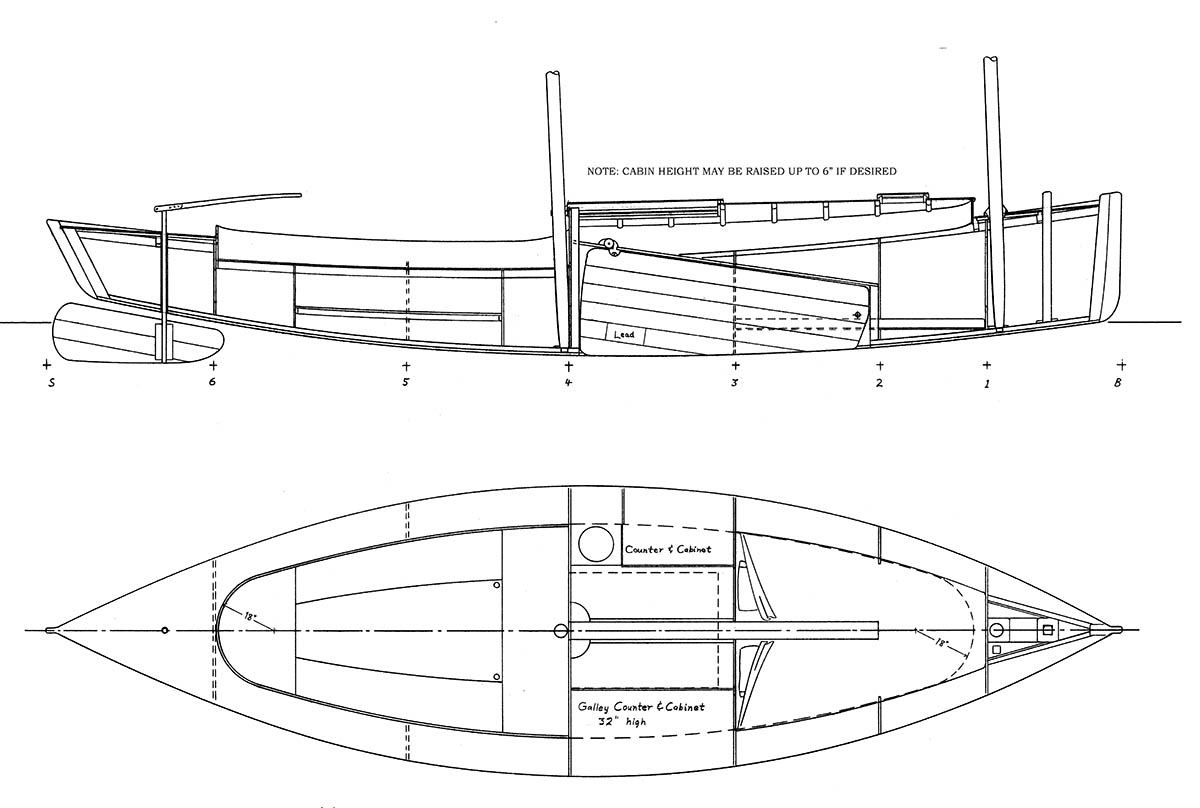
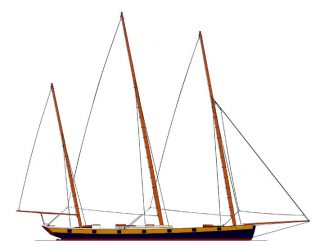
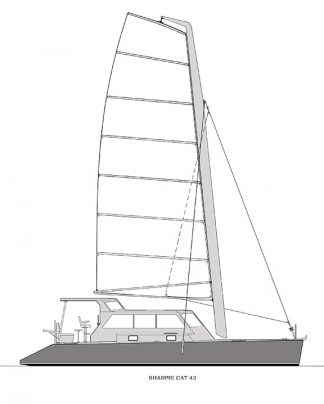

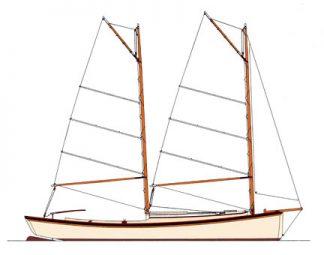
Reviews
There are no reviews yet.